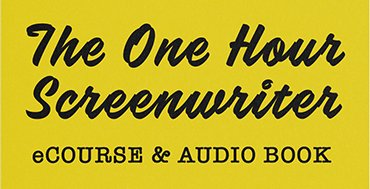Are You Living a Default Future?


These are similar to a character’s Strongest Traits in the Character Map. The Character’s Strongest Traits are:
– The traits the character believes are his or her salvation.
– The traits the character relies on to get out of trouble or “fix” problems.
– The traits the character leans on and uses as a crutch instead of making the Leap of Faith and facing his or her fear.
– The traits the character has to a fault.
– The traits the character must surrender.
These emotions/habits/attitudes/actions can keep you from experiencing your true self and separates you from otherwise healthy emotions. For example, if you feel “pleasing others is more important than your own happinesss” then you may resist getting appropriately angry with someone or taking healthy action because you fear that you will make another unhappy or upset.
In the example: Strong good qualities like being diplomatic or conciliatory can easily revert to Trouble Traits of being a people pleaser, swallowing anger and until resentment boils over or being passive agressive. A character’s greatest strengths are always his or her greatest weaknesses.
Continuing the example: The ways the character tries to appease or compensate for his or her fear only feeds the fear and makes it grow stronger and more powerful. When the character surrenders the Strongest Traits the traits don’t just disappear. They simply operate more appropriately in the background. The character won’t cling to these traits (walking on egg shells or being overly diplomatic and conciliatory) as a crutch to try to fend off or deflect the fear. Instead, he or she will turn and face the full force of the fear head-on and realize developing healthy attitudes and acting on appropriate boundaries can make others angry or unhappy.
One way to break the pattern and spot your own “default future” is the same situation/pattern keeps coming up again and again. You end up in the same set of circumstances facing the same kind of difficulties. Do you have a mini “GROUNDHOG DAY” in your own experience?
A character goes round and round the Character Map repeating troublesome behavior and masking or denying his or her fear and until the character either falls to the Dark Side or Makes a Leap of Faith and flies in the face of fear.
One of the ways to understand and in some case identify default future thinking in yourself is through an exercise called clearing “linguistic clutter.
Here’s the process: Take 5 minutes and without stopping write down everything that comes to mind. Write about everything makes you feel or believe that you are safe as well as everything that makes you feel unsafe. The trick is– you can’t stop! This process is analogous to “clearing the mind of clutter” so that new ideas, attitudes, habits, patterns have a chance to emerge. This is a really revealing exercise. Do it everytime you feel stuck.



Create a visual map for a character’s emotional journey. Pull stories from character rather from rote story structure beats. Some of the largest international media companies, use this in story and character development.


A clear concise guide for writers and producers to have by their side as they embark on a project. It gives a really vital reminder of what is key for story success.

No comment yet, add your voice below!